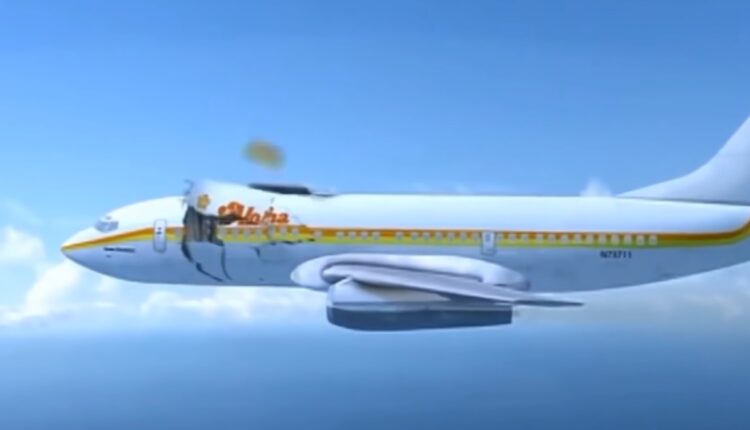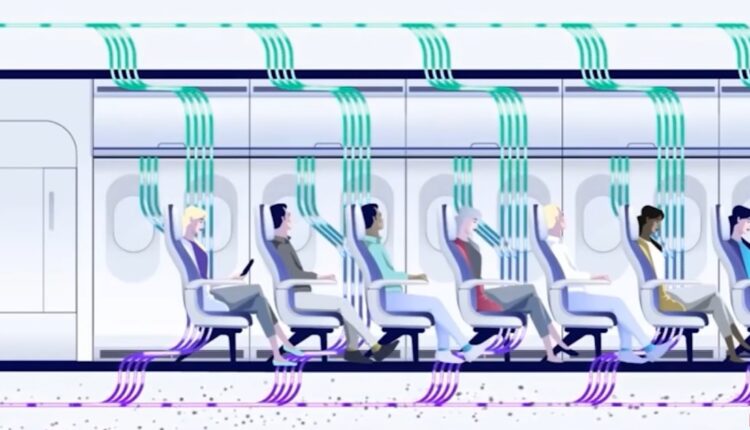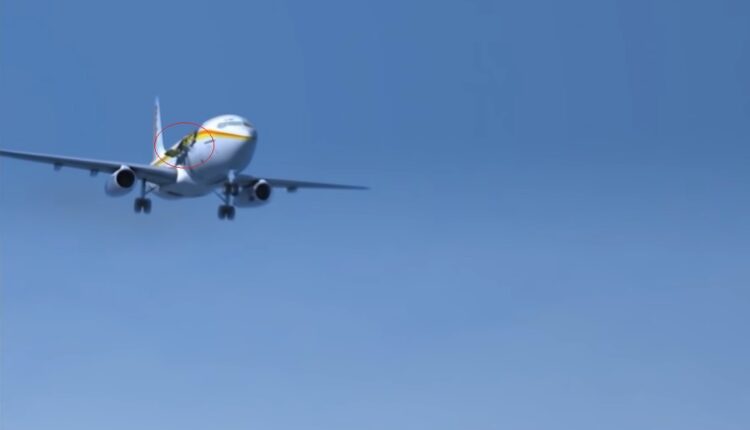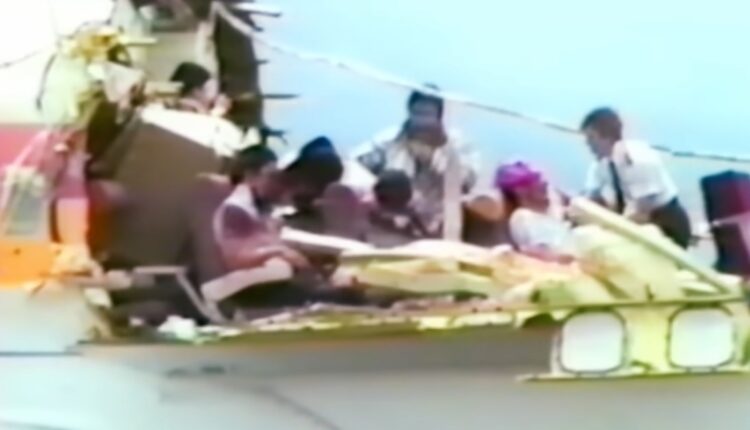The tragic accident on flight 243 of Boeing 737-297 aircraft! On April 28, 1988, Aloha Airlines flight 243 departed from Hawaii’s Hilo international airport. The plane was bound for Honolulu, less than an hour away. The weather was magnificent and the conditions were also quite favorable. However, just minutes after takeoff, a large explosion suddenly shook the entire plane. In an instant, the roof covering the first-class cabin exploded torn. Passengers and flight crew panicked. Could they make an emergency landing? Or would the rest of the plane fall apart? Let’s see what happened in the rest of the article, then.

The moment of opening of the upper part of the Boeing 737-297 in the air
Flight 243 had 6 crew and 89 passengers on board, including captain Robert Schornstheimer and first officer co-pilot Madeline “Mimi” Tompkins. The crew had more than 10,000 hours of flight experience with this aircraft model Boeing 737-297. The Boeing 737-297 plane was just 19 years old. In other words, it was 10 years behind its expected life. Also that day, he had made a total of 3 round trips before this time. However, nothing out of the ordinary was noticed prior to takeoff. On paper, the plane was in fine condition and ready to travel. As a matter of fact, after all the controls were provided, the plane took off without any problems. The plane began to rise, but as the pilots began to level the plane, there was a loud bang. The strength of the wind made the explosion sound louder. When the pilots looked back, the inside of the plane was filled with debris. The ceiling of the first-class section had completely vanished, and all that was visible was the blue sky. The first class passengers clung to their seats in horror and witnessed the entire roof of the Aircraft come off.

Air systems
Airplanes have cabin air systems that control pressurization, airflow and temperature. The higher an airplane flies in the atmosphere, the less oxygen there is and the cooler the air. Therefore, these systems are critical to ensure that passengers do not suffocate or freeze on their flights. However, it is normal for these systems to stop working because an explosive complex is formed. For such cases, oxygen masks fall from the ceiling on passenger planes. However, on Flight 243, the ceiling in the aircraft’s entire first-class cabin, including the oxygen masks, was broken. Fortunately, the passengers were still tied to their seats. However, an aircraft attendant who was standing at the time of this event could not hold on and fell from the plane.

Loss of control experienced by pilots on the plane
This opening in the plane started to cause the plane to shake from side to side and the controls to be difficult as time passed in the air. The plane looked like it could crash at any moment. On the other hand, the plane pilots were trying to make the announcement for the plane landing, but the sound inside was so loud that nothing could be heard. The pilots could not communicate with the flight attendants, and they could not even hear each other. With hand signals, the pilots decided to make a landing using their own efforts. Without wasting any time, they quickly descended, and when the plane descended to a certain height, the people inside began to breathe a sigh of relief.

Boeing 737-297 landing gear
The captain told co-pilot Madeline “Mimi” Tompkins to lower the landing gear. The light on the main display was flashing and they manually disabled the computer for landing. However, this movement could not make the light come on. They tried once more, and once again they failed to turn on the light. Usually this is done from the screen, but access was blocked and the captain insisted on landing the plane immediately instead of wasting time. Captain. Thinking that the front landing gear was open but the light was not working, he wanted to land the plane according to this thought. If the front landing gear had not landed, they would have crashed into the asphalt at about 320 km/h with nothing to stabilize the front of the plane. But they had no choice, it was their only option.
Fortunately, the landing gear was deployed, but the lights turned out to be faulty. The gears had indeed landed, and 13 minutes after explosive compression, captain Robert Schornstheimer and first officer co-pilot Madeline “Mimi” Tompkins had successfully landed. Everyone at Honolulu airport was in shock. Because the top of the plane had been ripped open like a tin can. A total of 65 people, 8 of the crew were seriously injured, and an aircraft attendant fell from the plane and died. The plane was already damaged beyond repair.

Why did the top of the plane break off in mid-air?
So what happened here? Typically, the fuselage of an aircraft has a thickness of 2.5 mm. In order to attach these parts to each other, holes are drilled on the edges and joined with a special rivet. Where these overlapping joints exist, the surface is obviously weaker. At this point, researchers began to suspect. There were even passengers who claimed there was a crack in the fuselage prior to takeoff. Moreover, he noticed that the area the passenger was pointing at was the same place that the researchers had caused the upper part to break off. Well, if there was really this crack, how was it overlooked in the controls before the flight? This is entirely at the discretion of the airlines.
Some precautions taken after the accident
After the accident, the airworthiness assurance task force was established. Mandatory corrosion control programs were developed. A rule was established that if a defect is found in an aircraft, the entire fleet to which the aircraft is attached is checked. It was a very expensive and huge undertaking. Of course, it was too late for the aircraft personnel who lost their lives. Unfortunately, the woman’s body was never found. But things could have been worse if it weren’t for the incredibly brave actions of the pilots and staff. The entire crew was rightfully hailed as heroes. Still, they wouldn’t be the last crew to experience such a gruesome incident due to an overlooked control. Accidents, negligence and mistakes continue to occur in the aviation industry, as in everything else, due to poor maintenance and many similar reasons.
